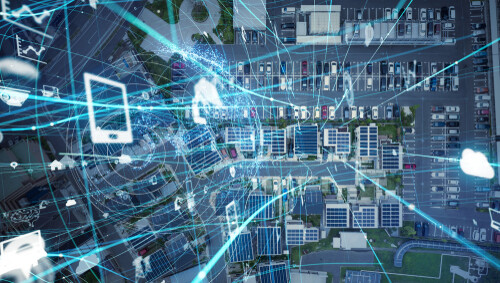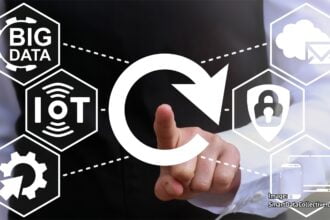Not long ago, people were scratching their heads and asking, “What is the internet of things and why should I care?” They’re still scratching their heads, but it’s not for lack of proliferation. The IoT is all over the place, and there are all kinds of uses for the internet of things. There are about 7 billion active IoT devices right now, and that number will only grow. People now know what the IoT is, and they’re wondering if they really need a connected, smart toothbrush, washing machine, refrigerator, or thermostat. They’re also wondering about security as billions of disparate devices flood the market.
Despite the inherent skepticism bound to the advent of any new technological advancement, there really are some great uses for the IoT. Read on to find out what they are.
1. Healthcare Technologies
For eldercare alone, healthcare costs are averaging around $4,000 per month, which causes a real headache for seniors, families, insurance companies, and care teams. Moreover, because of the cost of healthcare, there’s a growing need for preventive telehealth, which provides monitoring and recommendations based on your lifestyle.
When you’re applying the IoT to healthcare, you take the ability to continuously collect data, share relevant information with care teams, and provide recommendations through analytics software. Furthermore, you can improve communication.
The following use cases show how the internet of medical things (IoMT) is having a positive impact:
- Autobed, a smart-bed from GE Healthcare, helped Mt. Sinai Medical Center in New York City cut down on wait-times by 50 percent. The bed helps customize care and increase efficiency by collecting 15 metrics on each patient.
- e-Alert, a hardware monitoring sensor from Philips, keeps tabs on MRI systems and instantly alerts IT personnel if something is amiss.
- Fitbit and other wearables and sensors help track personal health and can provide doctors with important data on factors that contribute to chronic diseases.
- Researchers from the National Science Foundation are retrofitting seniors’ homes with sensors that send data to machine learning programs, which identify patterns that indicate problems.
These are just a few of the IoMT innovations happening now in a market that could easily be worth $158 billion in 2022.
2. Preventive Maintenance
During the 60s and 70s, the airline industry and the US Navy conducted research that showed 89 percent of assets fail at random, while 11 percent fail because of age. To prevent the majority of failures, technicians need data that tells them the likelihood of a random occurrence.
These days, automation is king in the industrial sphere, which is why industrial and military giants are harnessing the IoT for preventive maintenance. Basically, sensors in hardware feed data to analytics software, which predicts when and why machinery will break down.
This saves money because technicians fix only what needs to be fixed, and they don’t wait for hardware to fail, at which point repairs are more costly.
3. Supply Chain Logistics
In industries where supply chain logistics figure prominently, 46 percent of executives feel the IoT is a big game-changer. Why isn’t that percentage higher? Executives took the survey in 2016, yet in 2015 DHL and Cisco estimated that IoT tech will impact supply chains to the tune of more than $1.9 trillion.
That’s because radio frequency identification (RFID) and GPS sensors can give producers and manufacturers granular data on their shipments, which they can use to improve the trajectory of products from shipping center to the vendor — from floor to store. For example, big farms can track produce shipment conditions to make sure temperatures are optimum, which reduces waste. Seafood shipments can benefit as well. Smart refrigerators can adjust temperatures when needed.
Additionally, IoT can tell manufacturers how long it takes goods to sell. Then, they can analyze sales trends in order to improve inventory management.
4. Connected Cars
By 2025, there will be 300 million connected cars on the road, and experts predict this will increase the need for fog computing. Other IoT devices don’t traffic in as much data as connected cars do, so for them, the cloud is working fine as is; once there are 300 million smart cars out there, the cloud won’t be able to keep up, which will result in latency problems and security issues.
In other words, connected cars will push us towards implementing a complement to the cloud — fog computing — which will be integral for all things IoT. Connected cars are a catalyst for improvements in data storage and transfer. If we don’t use a method like fog computing, connected cars and driverless cars won’t work as well as we need them to and the entire IoT will suffer.
The automobile industry’s drive to bring us more connected cars will bring us closer to smart cities, which will communicate with connected cars.
5. Smart Metering
Smart meters and smart grids are the next step in energy conservation. With smart meters, utilities collect data on each household’s energy usage, determining when they use the most energy. “Smart metering benefits utilities by improving customer satisfaction with faster interaction, giving consumers more control of their energy usage to save money and reduce carbon emissions,” says IBM’s Phillip Tracy.
While traditional meters tell you how much energy a household uses in total, smart meters tell you when they’re using it, allowing utilities to adjust prices accordingly. Also, smart meters can integrate with smart thermostats, improving efficiency of energy usage overall.
As the IoT grows more complex, so too will artificial intelligence applications that filter streams of data, issue updates to technicians, make commands to devices, and make relevant predictions about devices and their surrounding environments. Smart manufacturers will leverage supply chain updates in innovative ways, and companies will learn that preventive maintenance on IoT devices for consumers gives them an advantage over the competition.
Final Thoughts
Overall, we’re at a nascent stage in the IoT. It’s a lot like the Cambrian explosion. Over time, this connected world will evolve, and consumers will stop seeing new devices as superfluous and will find them integral to their daily lives.









